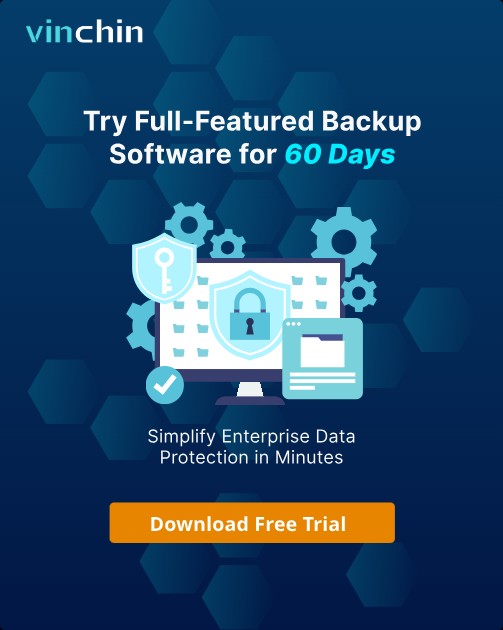-
What is Hyper-V hypervisor?
-
Core components of Hyper-V
-
Key features of Hyper-V
-
Comparison: Hyper-V vs other hypervisors
-
Build a reliable data protection strategy with Vinchin
-
Windows hypervisor FAQs
-
Conclusion
In today's IT architecture, which is centered around cloud computing and virtualization, the hypervisor plays an essential role. As Microsoft's virtualization technology, Hyper-V has long been one of the top choices for enterprises building private and hybrid cloud environments.
This article will give you a quick overview of its core architecture, key features, and the critical backup requirements that must not be overlooked in enterprise deployments.
What is Hyper-V hypervisor?
Hyper-V is a hypervisor-based virtualization platform developed by Microsoft, allowing multiple VMs to run simultaneously on a single physical server.
First introduced with Windows Server 2008, Hyper-V is now widely used not only across the Windows Server family but also supported on certain desktop editions, such as Windows 10 Pro and Enterprise.
As a Type 1 (bare-metal) hypervisor, Hyper-V runs directly on the hardware layer, offering greater performance and security advantages. Compared to traditional Type 2 hypervisors (like VirtualBox or VMware Workstation), Hyper-V is better suited for deployment in production environments.
Core components of Hyper-V
Hyper-V architecture uses a partition model to isolate and manage system resources:
Parent Partition: The first operating system instance to boot, typically running Windows Server. It has direct access to hardware and is responsible for managing virtual machines.
Child Partition: Each virtual machine is a separate child partition, running its own guest operating system, such as Windows or Linux.
Hypervisor Layer: The foundational layer that manages hardware-level virtualization, scheduling CPU, memory, and I/O resources for all partitions.
In addition to this structure, Hyper-V includes several key components:
VMMS (Virtual Machine Management Service): Manages the lifecycle of VMs, including creation, configuration, and operation.
Integration Services: Improves VM performance and functionality by enabling features such as time synchronization, shutdown coordination, and optimized drivers between the host and guest systems.
Key features of Hyper-V
✅ Dynamic Memory Allocation: Automatically adjusts memory usage based on the workload of each virtual machine, improving overall resource efficiency.
✅ Live Migration: Enables VMs to move between physical hosts without downtime.
✅ Virtual Switch Management: Supports multiple virtual network configurations, including external, internal, and private networks.
✅ Checkpoint Feature: Allows quick restoration of a VM to a specific point in time, useful for backup and testing scenarios.
✅ Nested Virtualization: Supports running another instance of Hyper-V within a VM, ideal for development and testing environments.
Comparison: Hyper-V vs other hypervisors
Feature | Hyper-V | VMware ESXi | KVM (Linux) |
|---|---|---|---|
| Hypervisor Type | Type 1 (bare-metal) | Type 1 (bare-metal) | Type 1 / Type 2 |
Management Tools | Hyper-V Manager, PowerShell | vSphere, vCenter | virsh, Cockpit |
Cost | Included with Windows Server | Requires additional licensing | Open-source, free |
OS Support | Windows, Linux | Windows, Linux | Primarily Linux |
Build a reliable data protection strategy with Vinchin
Hyper-V offers basic checkpoint and snapshot features, but they are not a substitute for enterprise-grade backup. Native snapshots have 3 major limitations: long-term retention affects performance, primary VHDX corruption causes snapshot failure, and they lack protection against ransomware or physical disasters.
Therefore, enterprises should deploy a reliable, purpose-built backup solution for Hyper-V to ensure comprehensive data protection. Vinchin Backup & Recovery offers an efficient and reliable all-in-one solution, purpose-built for virtualized environments and fully compatible with Microsoft Hyper-V. Key advantages include:
Agentless Backup Architecture: No need to install agents on individual virtual machines, simplifying deployment and reducing system overhead.
Fast Recovery: Full VM and file-level recovery; reboot critical VMs in 15s to reduce downtime.
Flexible Backup Strategies: Supports scheduled, incremental, and differential backups.
Offsite DR and Cloud Compatibility: Replicate backups to remote sites, tapes, or S3 for layered protection.
V2V Migration: Supports V2V migration from Hyper-V to other platforms such as VMware, XCP-ng, and Proxmox, offering flexibility and ease for future infrastructure transitions.
Vinchin Backup & Recovery's operation is very simple, just a few simple steps.
1.Just select VMs on the host
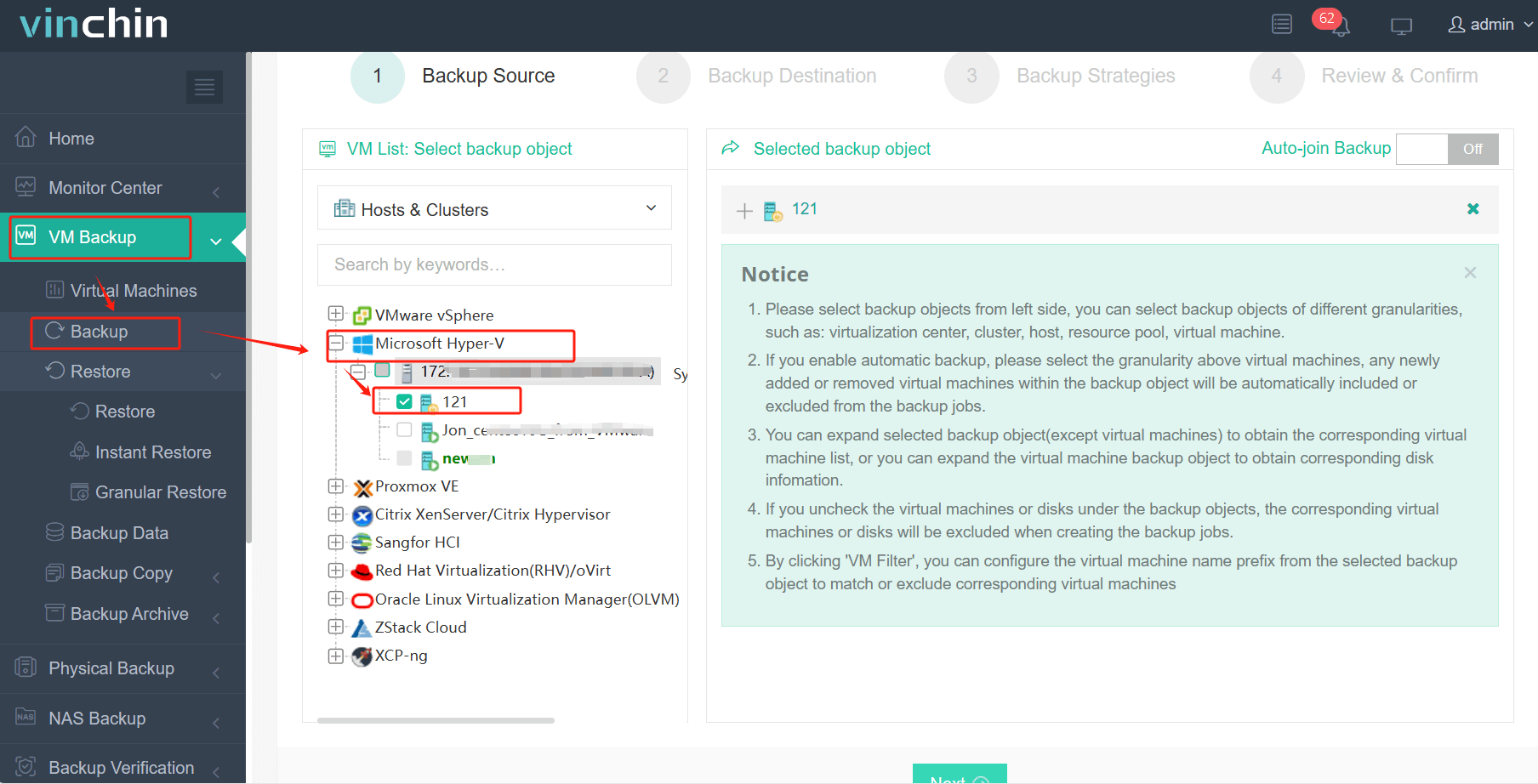
2.Then select backup destination
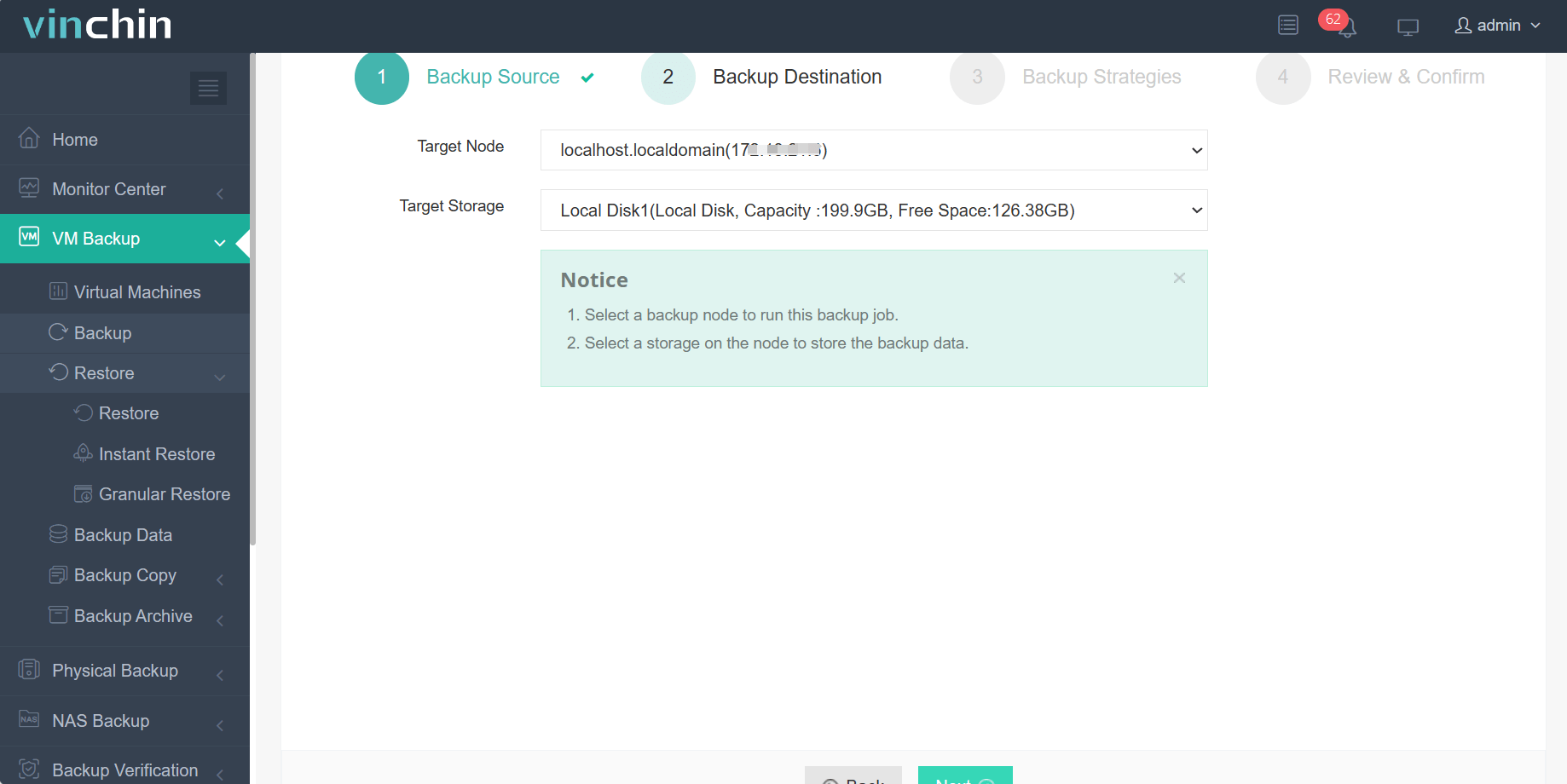
3.Select strategies
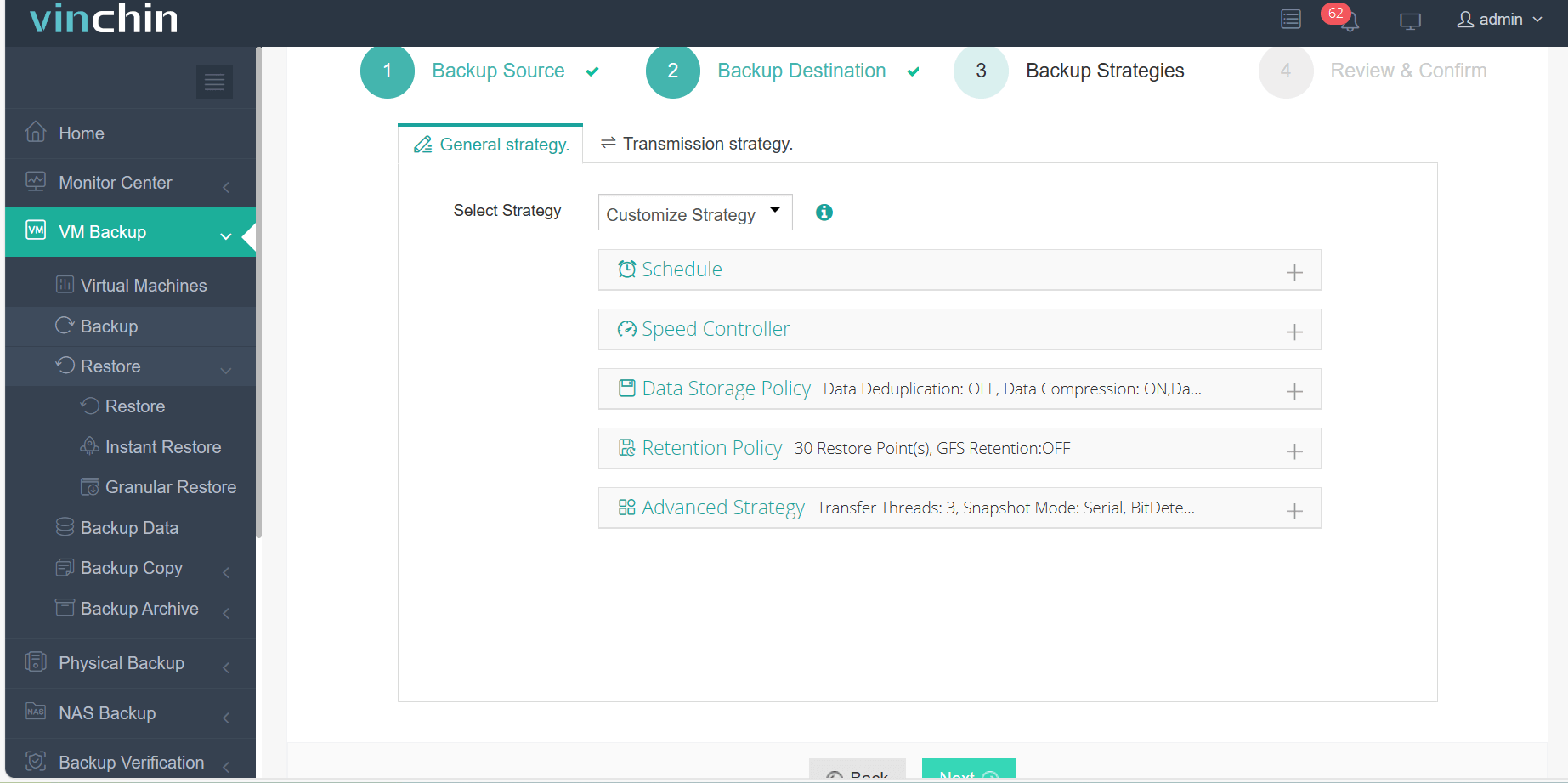
4.Finally submit the job
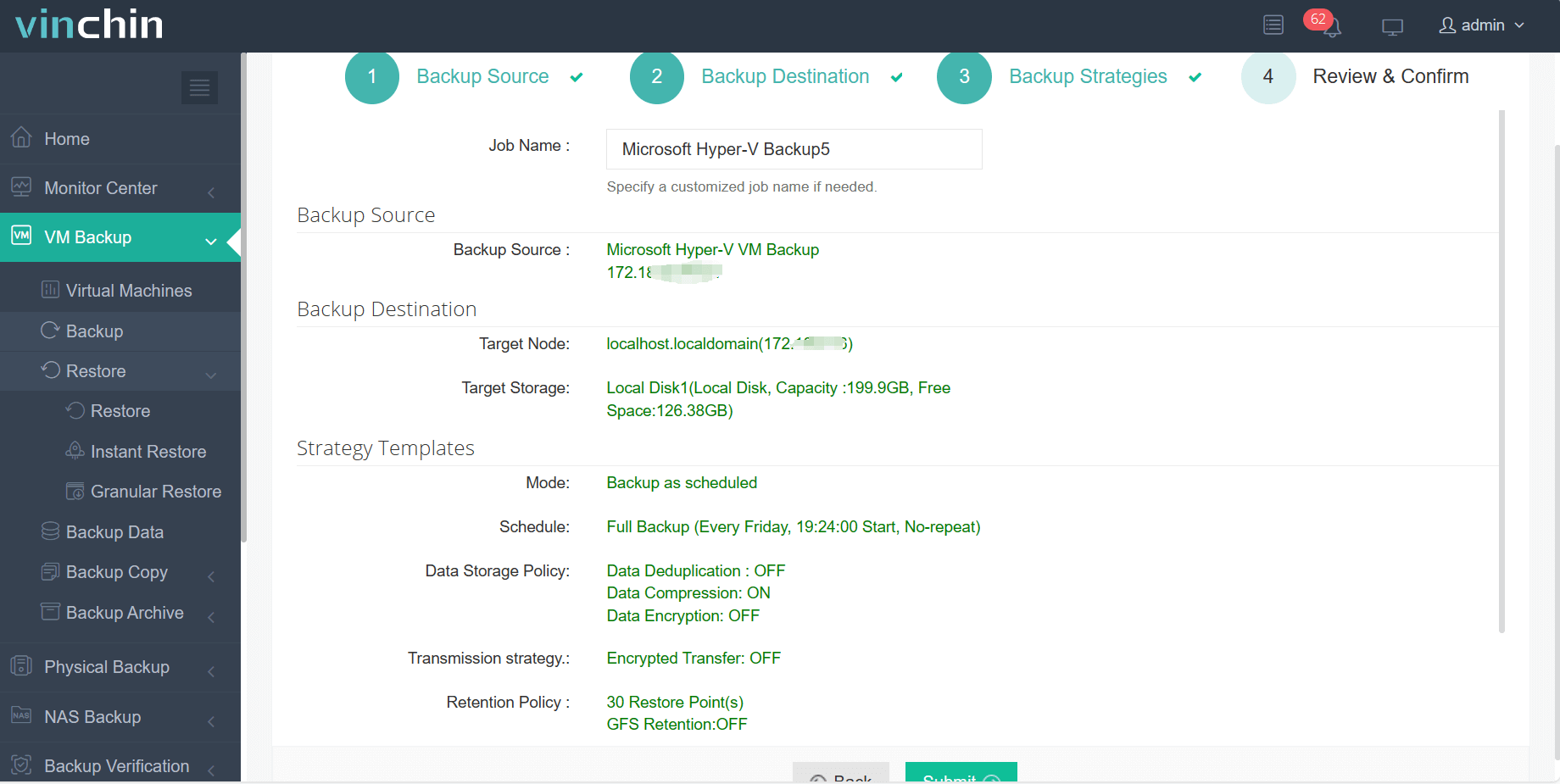
Start your 60-day free trial of Vinchin today and experience its powerful data protection capabilities in real-world business scenarios. Don't miss this valuable opportunity to explore a full-featured backup solution in your own environment!
For more information, feel free to contact Vinchin or your local authorized partner.
Windows hypervisor FAQs
Q1: What types of virtual hard disks are supported in Hyper-V?
A1: VHD (Virtual Hard Disk): Supports up to 2 TB
VHDX: Supports up to 64 TB and includes features like protection from power failure
Q2: What networking options are available in Hyper-V?
A2: External: Connects VMs to the physical network
Internal: Allows communication between VMs and host
Private: Allows communication between VMs only
Conclusion
In a virtualized, cloud-driven IT landscape, Hyper-V remains a leading hypervisor choice. Paired with Vinchin Backup & Recovery, enterprises can ensure efficient, secure, and flexible data protection tailored for modern production environments and future platform transitions.
Share on:





